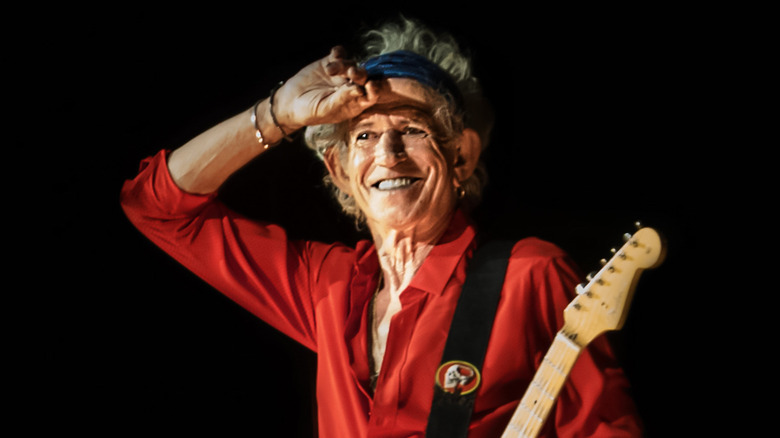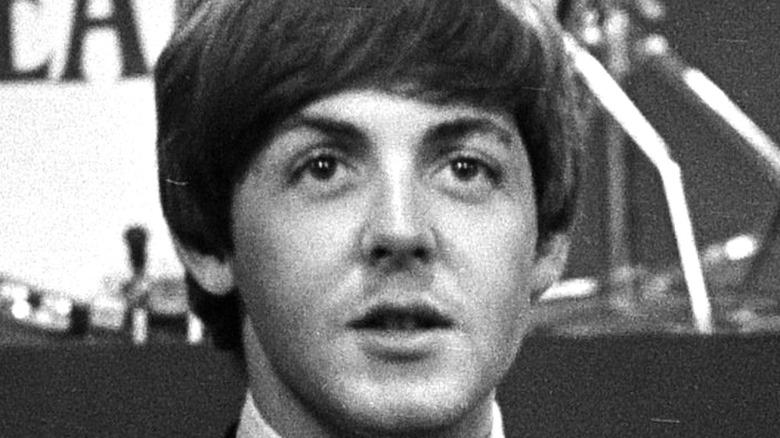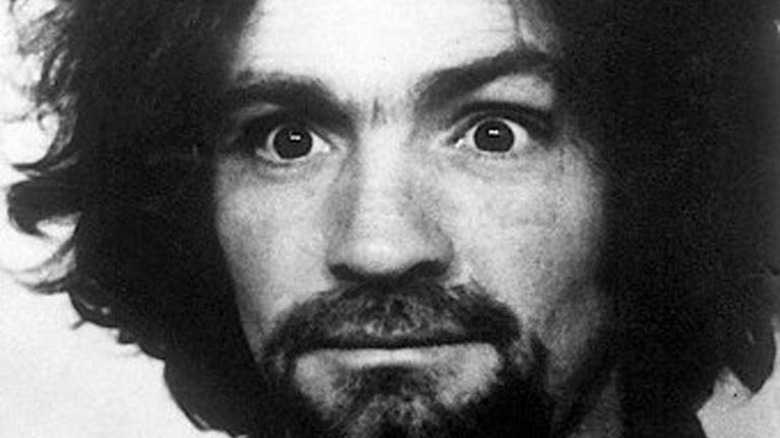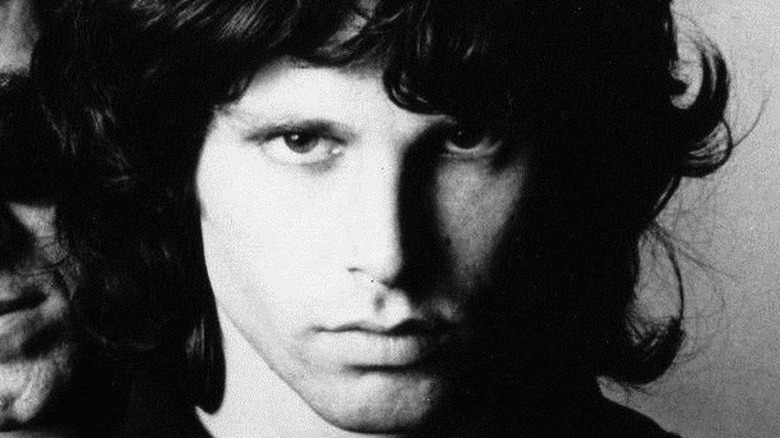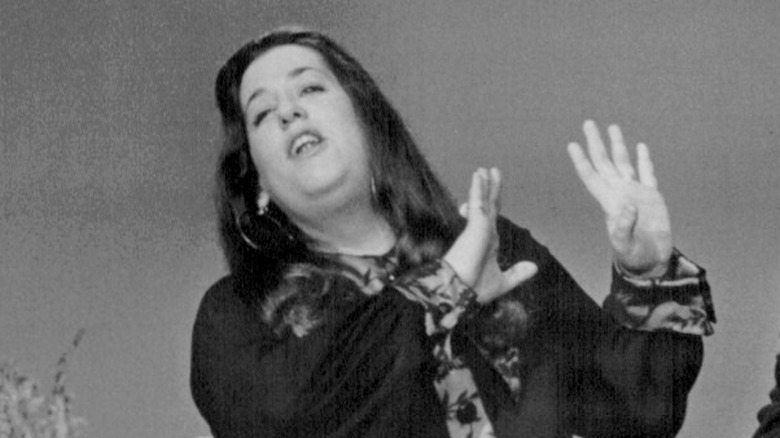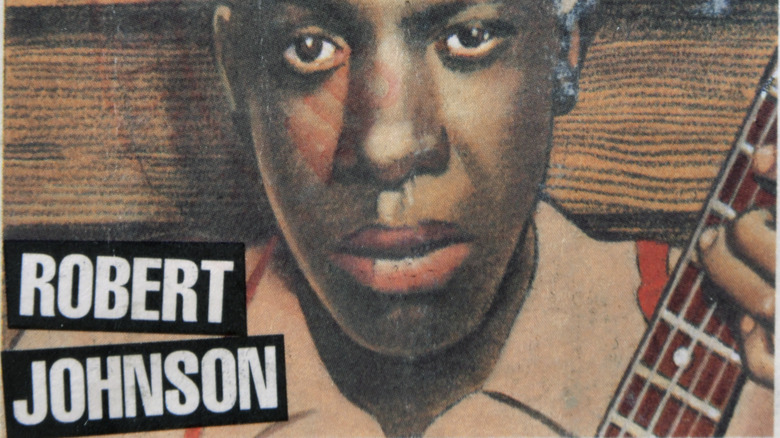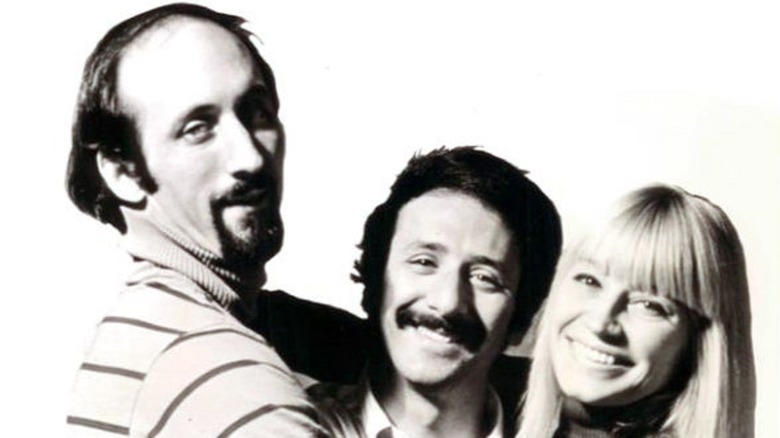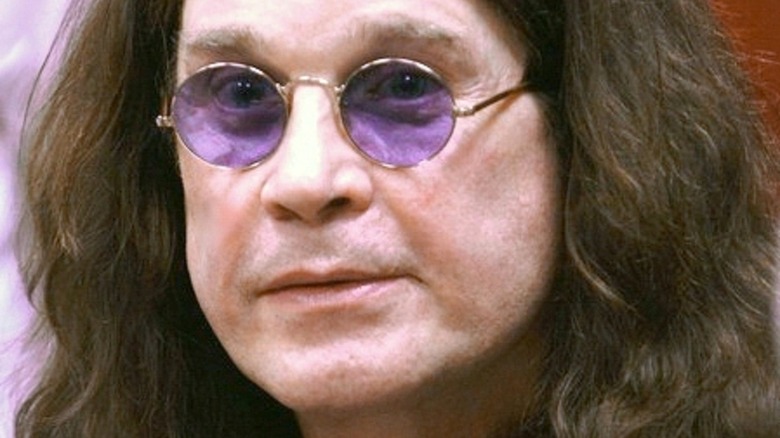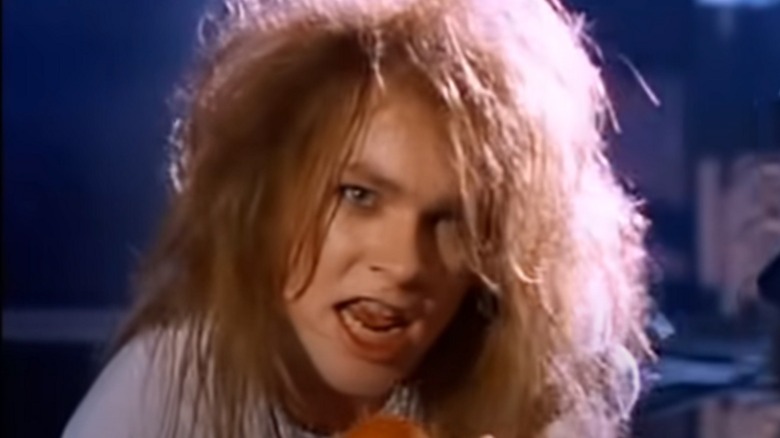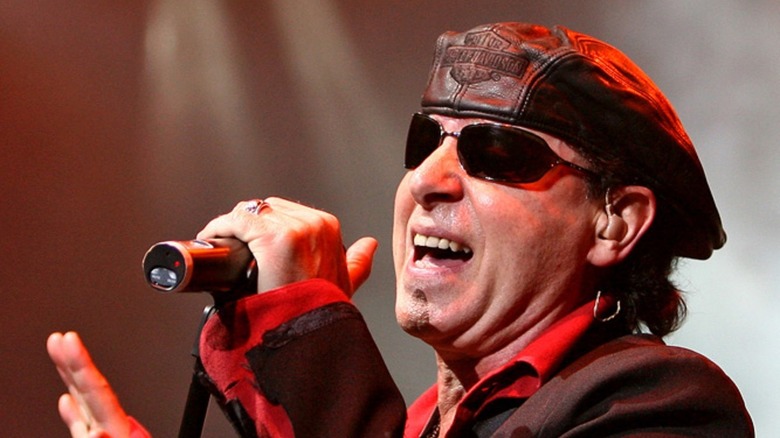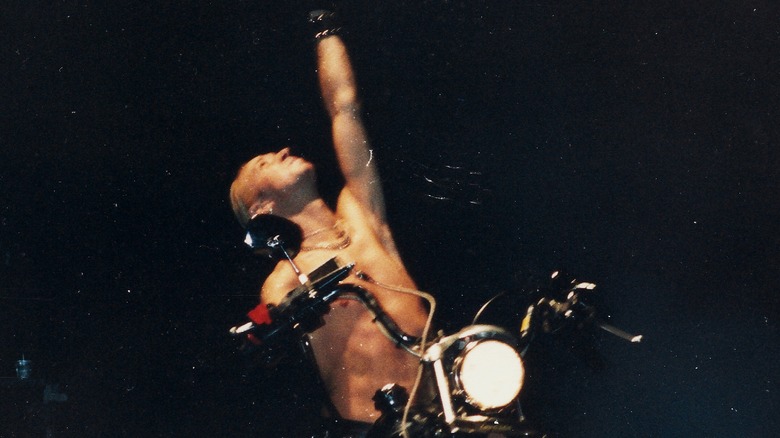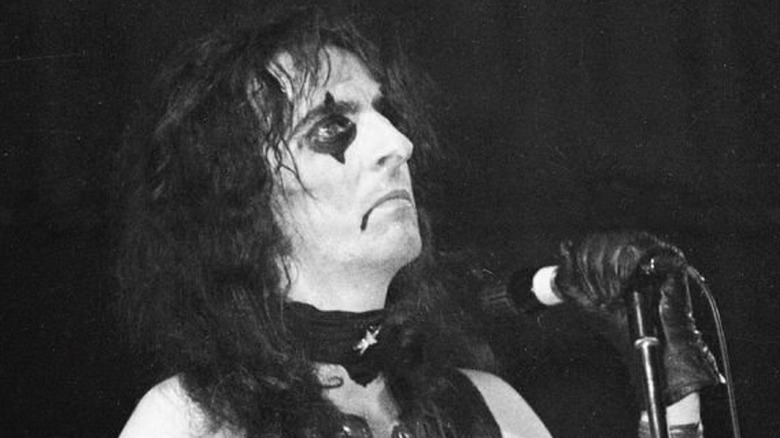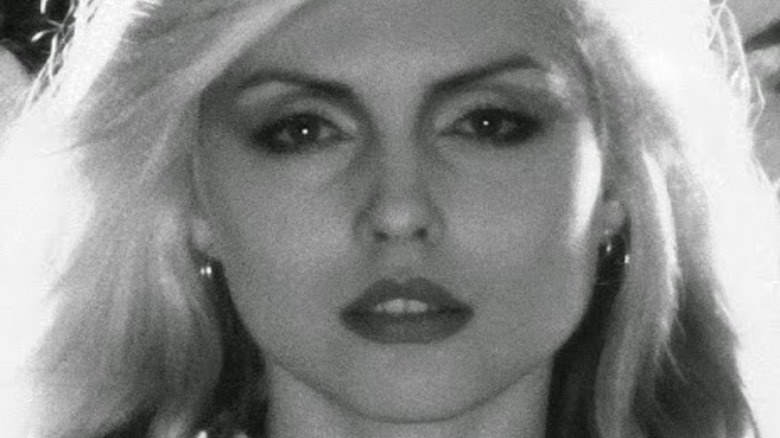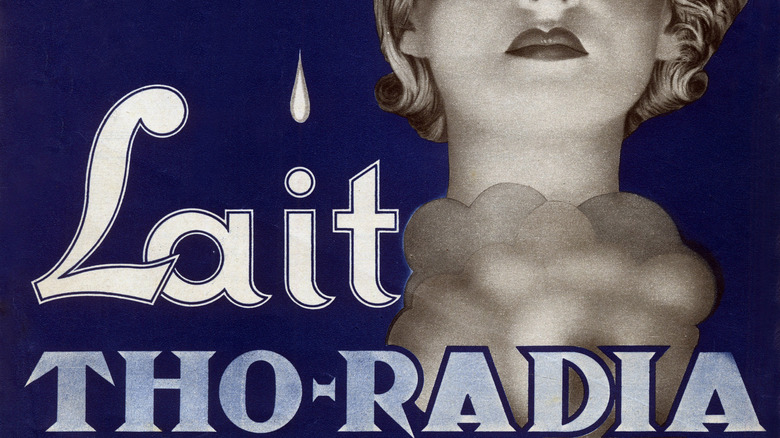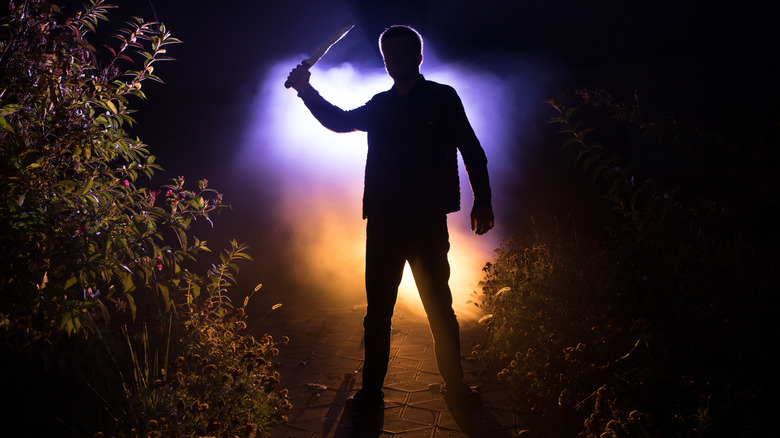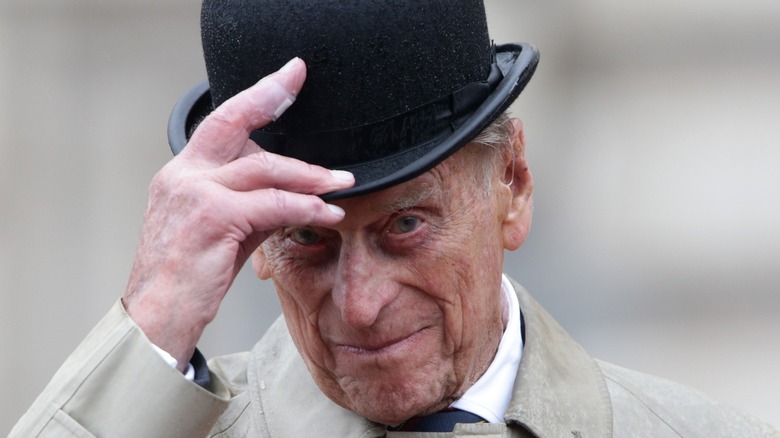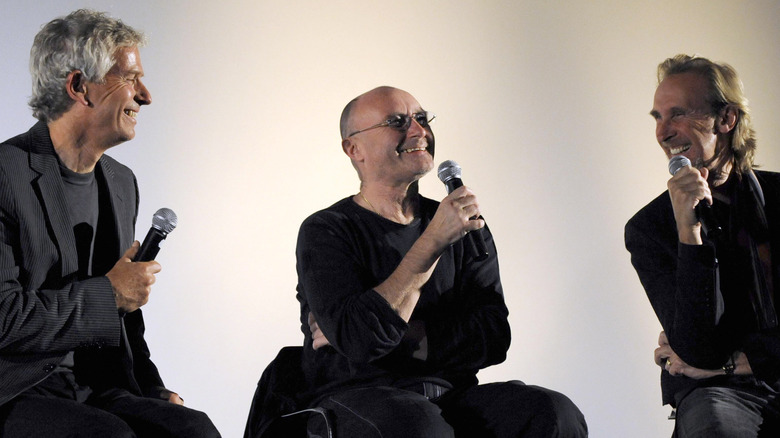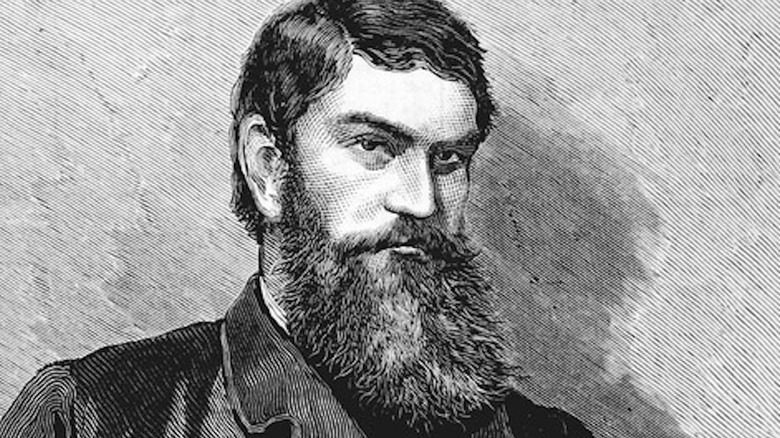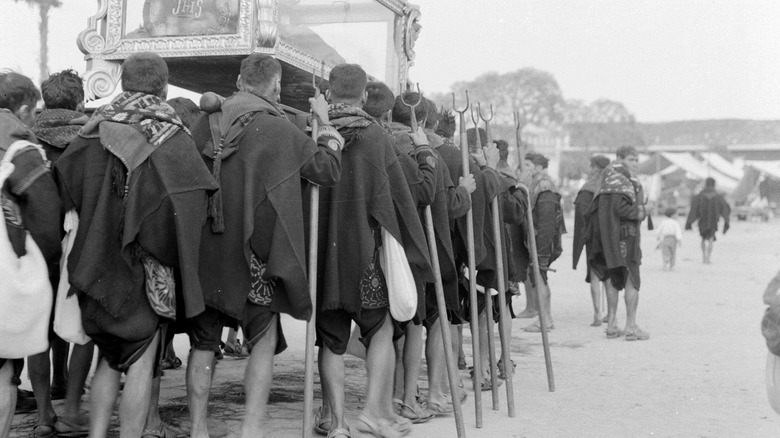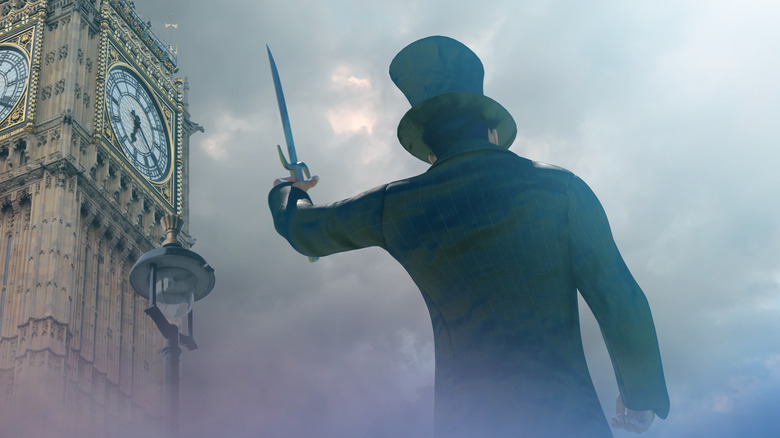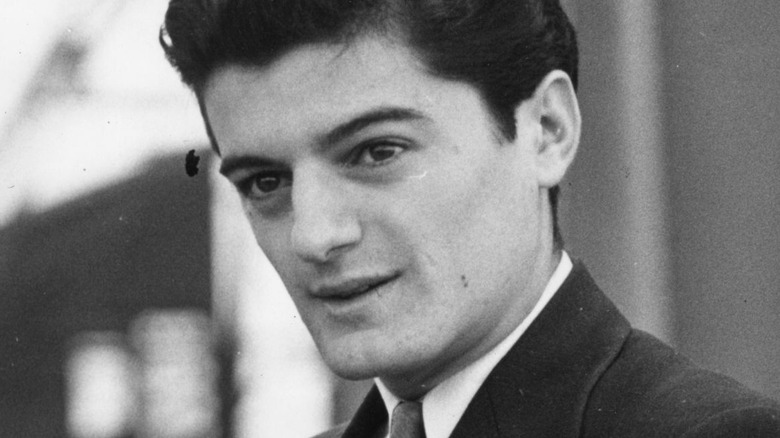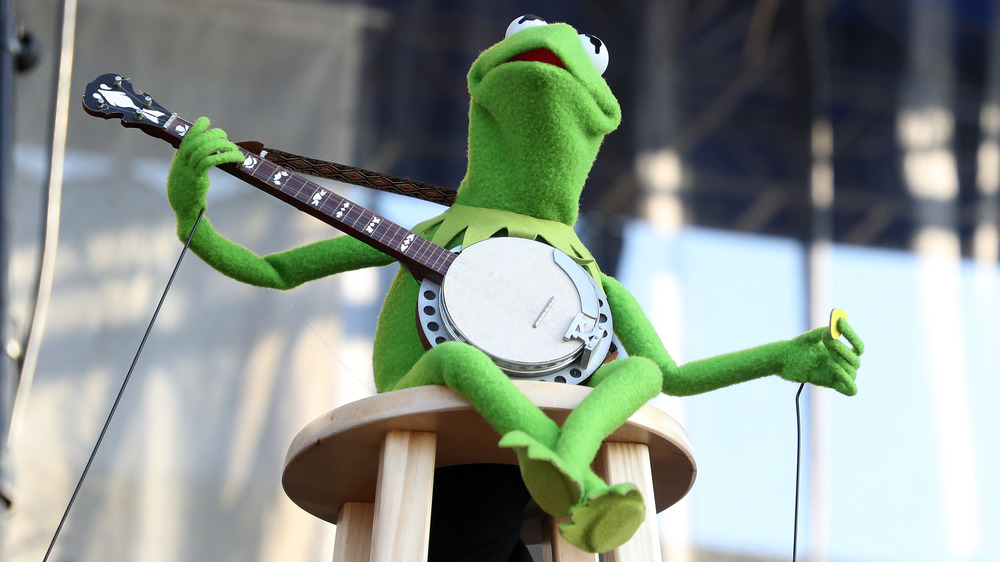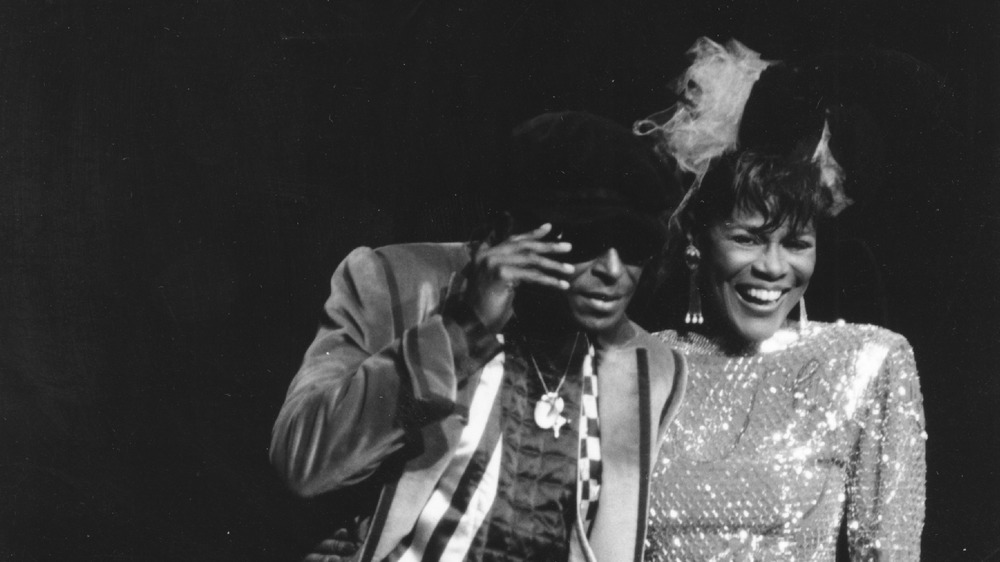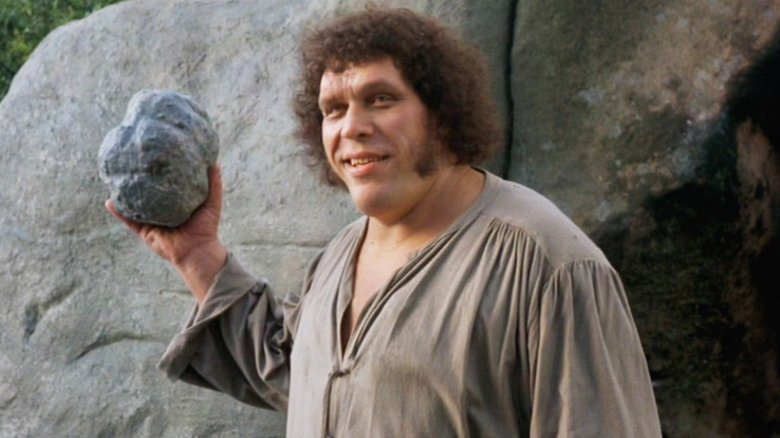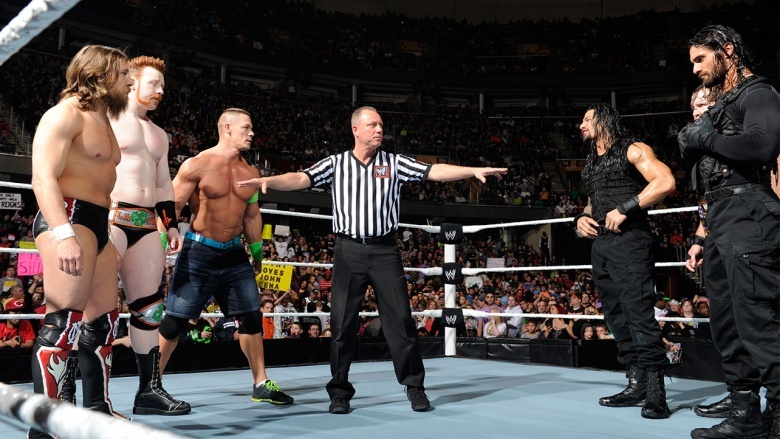
The True Stories Behind Rock’s Most Famous Urban Legends
Rock stars become legendary through their music, and mythical through the weird, wild and highly improbable stories that grow up around them. What’s even wilder is that a lot of the time, these stories turn out to be true.
There are some recurring themes when it comes to rock urban legends: drugs, devil worship, and deaths that either did happen even though there’s no evidence, or didn’t happen, despite plenty of evidence. There are also a few stories with a true crime overlap. And a couple in which animal rights activists would have liked to have seen arrests.
As with most urban legends, the original source of many of these is unclear, and sometimes, uncovering what really happened is difficult too. But many are outright lies, which you’ll now be able to put to bed once and for all.
Including Keith Richards’ odd treatment of his father’s ashes, Charles Manson’s alleged Monkees connections, Alice Cooper’s chicken incident, and Debbie Harry’s supposed run-in with a notorious serial killer, here’s the truth about rock’s most famous urban legends.
This article mentions heavy drug use. If you or anyone you know is struggling with addiction issues, help is available. Visit theSubstance Abuse and Mental Health Services Administration websiteor contact SAMHSA’s National Helpline at 1-800-662-HELP (4357).This article also mentions suicide. If you or anyone you know is having suicidal thoughts, please call the National Suicide Prevention Lifeline at 1-800-273-TALK (8255).
Keith Richards did indeed snort his father's ashes
Rolling Stones guitarist Keith Richards is as famous for ingesting various drugs in large quantities as he is for his role in one of the world’s most prominent rock groups. However, people were still shocked when a story emerged that he’d snorted his father’s ashes.
Unlike many of the legends on this list, this one originated with the subject. Which doesn’t necessarily mean it’s true, but it seems an odd thing to lie about. Claiming to have snorted your dad’s remains doesn’t exactly paint you in the best light. Especially since at the time, Richards was no longer the young, rebellious rock star whose intentionally outrageous image might have been boosted by such a tale.
Richards told the story to NME in 2007. As the Guardian reports, he recalled, “I couldn’t resist grinding [his ashes] up with a little bit of blow.” He added that his father, Bert, who died in 2002, “wouldn’t have cared.” As for the effect, Richards said, “It went down pretty well, and I’m still alive.”
Richards isn’t a totally reliable narrator, however. He was also the source of another popular urban legend about his drug habits. This one had him kicking heroin for a 1973 tour by replacing every drop of blood in his body via drug-free blood transfusions. A friend of the band doubled down on the story, but Richards has said he made it up because he was tired of people asking how he’d kicked drugs.
Paul McCartney is probably not a doppelganger
Despite being held up as a uniquely gifted songwriter, Paul McCartney isn’t irreplaceable — if you believe one of the most prevalent conspiracy theories in rock history.
According to Rolling Stone, the bizarre fan theory now known as “Paul is dead” found a mass audience in October 1969, when a radio DJ complied with a caller’s request to play the intro of “Revolution 9” from the Beatles’ “The White Album” backwards. To the caller’s ear — and those of many co-conspirators, aka Paul Bearers — the resulting vocals sounded like, “Turn me on, dead man.”
The theory was that the “real” McCartney had been killed in a car accident on November 9, 1966, and the rest of the band covered up his death.
By this point, the Beatles had just released their penultimate album “Abbey Road.” The album became another “clue,” with a newspaper reporting that the cover showed a funeral procession. John Lennon led as the preacher, Ringo Starr was the undertaker, McCartney was the corpse — barefoot and out of step with the others — and George Harrison was the gravedigger.
Despite repeated denials, fans continued to enjoy unearthing “confirmations” of Paul’s death, mainly involving song lyrics and album covers. John Lennon even referenced the theory in his 1971 song “How Do You Sleep?” with the lyric: “Those freaks was right when they said you was dead.” However, there is no evidence McCartney died in 1966.
Charles Manson did not audition for the Monkees
One problem with putting together a band via open auditions is that you never know who’s going to show up. In 1965, one such talent search supposedly got far more than the organizers bargained for.
The facts are that on September 8, 1965, producers Bob Rafelson and Bert Schneider placed an ad in Daily Variety, looking for “Folk & Roll Musicians-Singers” — specifically “insane boys, Age 17-21″ — to be in a band and TV series, both called “The Monkees.” The band went on to have hits with “I’m a Believer” and “Daydream Believer.”
The rumor is that of the 437 hopefuls who auditioned, one went on to become famous in his own right, for a much less wholesome reason. That was Charles Manson, aspiring rock star and future cult leader, who was arrested in October 1969, months after instigating multiple gruesome murders.
It’s true that Manson wanted to become a rock star. His song, “Cease to Exist,” was restyled and renamed by the Beach Boys as “Never Learn Not to Love.” Manson and Beach Boys drummer and singer Dennis Wilson had been friends, until Manson threatened Wilson over taking credit for this song. (Dennis then beat him up in front of a crowd, according to SFGATE.) Guns N’ Roses later recorded Manson’s “Look at Your Game, Girl.”
Manson tried multiple times to break into the music industry. However, he could not have auditioned for the Monkees, since he was in prison at the time, as Snopes reports.
Jim Morrison really died in 1971
Fans have been refusing to accept the official story about The Doors frontman Jim Morrison’s death since — as said official story goes — he was found dead on July 3, 1971. As the BBC reported, Morrison died of heart failure in the bathtub of his Paris apartment.
An autopsy was never performed, which only served to promote conspiracy theories about “what really happened.” Several people have claimed that Morrison actually died of a drug overdose in the bathroom of a Paris nightclub called the Rock & Roll Circus.
In 2007, CBS reported that former club manager Sam Bernett had written a book claiming that he saw Morrison slumped over a toilet, apparently dead from a heroin overdose. Bernett also claimed that Morrison’s dealers insisted he wasn’t dead, and took him away. Bernett’s account was somewhat supported by occasional club employee Patrick Chauvel, who said that he helped the people who were carrying Morrison. Chauvel believed Morrison was already dead, but wasn’t sure.
Jim Morrison’s grave in Paris’ Père Lachaise Cemetery still attracts a steady flow of visitors, but some people insist he’s not actually in it. A conspiracy theory holds that Morrison faked his own death in order to escape the limelight. Subsequently, he’s been “spotted” in various places at various times. One rumor that gained traction in 2016 had Morrison living in a retirement home in Paris. However, the story was started by a satirical site, the Nevada County Scooper.
Mama Cass Elliot did not choke to death on a ham sandwich
Singer Cass Elliot spent her whole career being unfavorably compared to the thin female musicians with whom she shared the LA music scene, and even a stage, alongside Michelle Phillips in the Mamas & the Papas. Elliot tried various crash diets to slim down, and she also used drugs and alcohol, potentially to a dangerous degree.
On 29 July, 1974, Elliot was found dead alone in a friend’s apartment in London. Snopes reports that physician Dr. Anthony Greenburgh, who examined Elliot’s body at the scene, told the Daily Express that Elliot had likely been eating a ham sandwich while lying down, and appeared to have choked to death.
An autopsy revealed that the ham sandwich story was completely untrue: Elliot had died from a heart attack. It’s now thought that the crash diets which saw her lose and regain drastic amounts of weight had weakened her heart.
The ham sandwich story might have faded from memory had Elliot’s manager, Allan Carr, not intervened to make sure it had already taken root in the public’s imagination. Elliot’s friend and Hollywood Reporter columnist Sue Cameron told People that Carr told her to write the story about the sandwich, to hide what he suspected was a fatal drug overdose. Carr apparently intended to protect Elliot’s reputation after her death, but in a way, he perpetuated the cruelty that had plagued her entire career.
Robert Johnson and Jimmy Page probably didn't sell their souls to the Devil
Tales of musicians exchanging their souls with the devil in return for supernatural talents are time-honored, but two stories stand out from the 20th century.
According to the New York Times, the myth goes that blues legend Robert Johnson would initially get booed off any stage he played on. But he disappeared for six months, before returning with an incredible and unique playing style that shook up the blues genre and beyond.
Johnson allegedly came by those talents by making a deal with the devil, at the crossroads of Highways 49 and 61 in Clarksdale, Mississippi. The devil gave Johnson supreme guitar skills in exchange for his soul. When Johnson died unexpectedly and mysteriously, at the infamous rock star age of 27, the legend that the devil had claimed his prize was further cemented.
Another guitar legend is rumored to have made a similar deal, although with longer-lived results. Jimmy Page, of Led Zeppelin, is openly interested in black magic, even buying the house of notorious British occultist Aleister Crowley. This and his musical talents have made him an obvious target for rumors about Satanic pacts. The band was even accused of slipping devil-worshipping messages into their music.
Biographer Mick Wall has insisted that Page’s interest in magic is more academic than practical. But whether you believe these pacts occurred may depend largely on whether you think it’s actually possible to make such a deal.
Puff the Magic Dragon was not written about drugs
On its surface, the 1962 Peter, Paul and Mary song “Puff the Magic Dragon” tells the story of a friendship between shore-dwelling dragon Puff and a boy named Jackie Paper. It’s actually pretty sad: Jackie grows up and abandons Puff, who retreats into his cave, destined to spend the rest of his eternal life alone.
However, the song is mostly remembered not for its tragic narrative, but as a thinly veiled reference to drugs. In this interpretation, as Snopes recounts, the “Magic Dragon” is really cannabis, the “autumn mist” the pair “frolicked in” is smoke from a joint, and “the land of Honalee” is Hanalei, a Hawaiian village known for producing a strong cannabis strain.
Learning that “Puff” was written by a 19-year-old Cornell student, Leonard Lipton, in 1959, may further convince you of this hidden meaning. But Lipton — who went on to become a prolific inventor, movie producer, author and journalist — insists he was writing about a non-metaphorical dragon. Specifically, he told LA Weekly that he was inspired by a 1936 poem by Ogden Nash called “A Tale of Custard the Dragon.” According to Snopes, he gave the poem to Peter Yarrow — the Peter in the band’s name — who added a melody and more lyrics, and eventually recorded it.
Lipton is, understandably, fed up with being asked about the drug connection. “A song for little kids that advocates the use of drugs would not be appropriate,” he told LA Weekly.
Ozzy Osbourne did bite off a bat's head on stage
Don’t bring animals you’d like to keep in one piece to an Ozzy Osbourne gig. On January 20, 1982, Osbourne cemented his status as rock’s wildest performer when he bit the head off a real bat during a show in Des Moines. Whether the bat was dead or alive before it’s decapitation is unclear, according to the Washington Post.
Speaking to David Letterman two months later, Osbourne explained that when someone threw the bat on stage, he assumed it was a toy, and the head-biting was his natural response. (More on that impulse in a second.) Asked whether he noticed his mistake immediately, he commented wryly, “Well, I’ve eaten some pretty rough chicken on the road.”
Remarkably, this wasn’t even Osbourne’s first time decapitating an animal with his teeth in front of an audience. Almost exactly a year before the Letterman interview, Osbourne had shocked and horrified a room full of Epic Music employees by biting the head off at least one dove.
The plan had been for him to release them into the room, but Osbourne changed his mind when the moment came. Accounts differ as to how many doves he dispatched. Osbourne’s then-manager and future wife Sharon Osbourne said it was one, and that he let one go, whereas Ozzy has said it was two.
Ozzy apparently has no regrets: in 2019 he released a plush bat, complete with removable head, to commemorate the 1982 incident.
Adriana Smith helped Guns N' Roses add authentic moans to Rocket Queen
There are thousands of urban legends about Guns N’ Roses — and you can listen to the outcome of one on one of the band’s tracks. Although the person at the center might prefer if you didn’t.
In the mid-’80s, Adriana Smith was either the girlfriend of drummer Steven Adler, or, as Adler later described her, one of a group of strippers the band hung out with. Either way, when Smith discovered Adler cheating, she sought revenge by sleeping with Guns N’ Roses frontman Axl Rose.
According to Smith, Adler walked in on the couple and stormed out. Adler and Smith eventually got back together. But during the sessions for Guns N’ Roses’ first album, “Appetite for Destruction,” Smith says that Rose convinced her to help him supply very specific additional vocals on a track called “Rocket Queen.”
Drunk, she and Rose went into one of the booths and started having sex. According to Rolling Stone, Rose at one point accused Smith of faking her moans of pleasure. She probably was: She later said, “It wasn’t really romantic, passionate or hot. It was kinda contrived.”
Smith immediately regretted the recording, as she worried it might damage her chance at an acting career. In 2015, Rolling Stone reported that she blamed it for pushing her into drug and alcohol addiction. However, Smith told the Mirror in 2016 that she’s still friends with Guns N’ Roses guitarist Slash.
Phil Collins' In the Air Tonight is not about a drowning man
Sometimes fans read way too much into lyrics (as other entries in this list prove.) And sometimes, they turn a simple metaphor into a true crime anecdote.
The latter impulse explains a creepy urban legend about Phil Collins’ moody 1981 song “In the Air Tonight.” The story goes that Collins wrote the song after he saw a man drowning but couldn’t reach him, while another man — who was close enough to help — watched and did nothing. The song includes lyrics such as “If you told me you were drowning / I would not lend a hand,” and ” I was there and I saw what you did.” Alternative versions of the legend, as documented by Snopes, have the bystander failing to intervene in a rape.
In some versions, Collins then supposedly tracked the onlooker down, sent him two front row tickets to a show, and shone a spotlight on him while singing “In the Air Tonight,” exposing him as the perpetrator in the song.
In an appearance on “The Tonight Show” with Jimmy Fallon, Collins acknowledged that it’s a great story, but added, “Unfortunately, none of it’s true.” (Not so unfortunate for the hypothetical drowning man.) Collins summed up the true inspiration as, “I was p***** off.” Asked to elaborate, he explained that he wrote the song while he was going through a divorce from his first wife, Andrea Bertorelli. (Collins married and divorced twice more.)
The CIA didn't write Wind of Change… probably
Rock stars like to think of themselves as anti-establishment: but even the establishment knows how powerful the right song can be.
In 1989, the Cold War had thawed to the point that the Soviet government permitted Western hard rock acts — including West German group the Scorpions — to perform at the Moscow Music Peace Festival that summer. On November 9, 1989, the Berlin Wall — which had separated the Soviet-controlled eastern sector of the city from the democratic western sector since 1961 — was politically and literally dismantled.
In early 1991, the Scorpions released the song “Wind of Change,” with lyrics calling for an end to the Cold War. It was a huge hit across Europe: according to Rolling Stone, it remains one of the best-selling singles in history. On December 25 that year, the USSR officially dissolved.
That’s all true. What’s disputed is who wrote the song. According to rumor, “Wind of Change” was written by the CIA, as a soft power-play against Communism.
The youth of East Germany (aka the GDR) had proved Western rock music was a powerful draw: Thousands risked imprisonment by the Stasi (East Germany’s secret police) to listen to it. So it wouldn’t be a completely ridiculous tactic. Also, the rumor seems to have come from inside the CIA.
Scorpions frontman Klaus Meine denies everything, saying he wrote it, and citing the Moscow Music Peace Festival as his inspiration. But he would say that, wouldn’t he?
Judas Priest did not put secret suicide messages in their music
Many bands have been accused of sneaking messages into songs that can only be heard when the record is played backward, known as backward-masking. But one such accusation landed Judas Priest in court.
In 1985, Raymond Belknap, 20, and James Vance, 18, shot themselves after hours drinking alcohol, smoking cannabis, and listening to Judas Priest’s 1978 album “Stained Class.” Vance survived, but Belknap died instantly.
Vance and the men’s families sued the band and their record label, CBS Records, in civil court, accusing them of putting backward-masked messages encouraging suicide into the album. In particular, they claimed that the song “Better by You, Better Than Me” — a cover — included lines like “let’s be dead” and “try suicide.”
By the time the case came to trial in 1990, Vance had died of his injuries. According to the LA Times, Judas Priest singer Rob Halford testified that he had put a secret message in a song called “Love Bites,” which was released on the band’s 1984 album “Defenders of the Faith.” However, the band and CBS Records strongly denied using their music to encourage suicide, or putting backward-masked messages on the songs in question.
Ultimately, the judge ruled with the band and the case was dismissed. Reflecting on the trial to Rolling Stone, Halford said it was tough for Judas Priest, but, “at the heart of the matter were these two guys that lost their lives tragically.”
If you or anyone you know is having suicidal thoughts, please call the National Suicide Prevention Lifeline at 1-800-273-TALK (8255).
Alice Cooper really was (accidentally) responsible for the gory death of a chicken
The peace and love ethos of the 1960s didn’t extend to winged animals, as Alice Cooper learned the hard way.
In 1969, Cooper’s legendary manager Shep Gordon booked his band what sounded like a dream spot, playing between John Lennon — his first post-Beatles gig — and the Doors at the Toronto Rock and Roll Revival concert. Then came the chicken incident.
Exactly how a chicken got on stage during Cooper’s set is up for debate. It’s been said that it came from the crowd, but Cooper believes Gordon must have supplied it, because who brings a chicken to a rock concert? Gordon told Rolling Stone there were feral chickens wandering around, and he threw one on stage for fun. But in 2016, Cooper’s bassist Dennis Dunaway claimed that the chicken was one of two the band traveled with, named Larry and Pecker.
Either way, Cooper decided to help it off stage. In a documentary about Gordon, “Supermensch: The Legend of Shep Gordon,” Cooper said that he threw the chicken into the crowd, assuming that — since it had feathers — it would fly. (Don’t let him near the penguins.) Not only did it not fly, but when it landed in the crowd, it was torn to pieces, and the crowd threw the bloody remains back at the band. Dunaway said that although no one in the band had been involved in the brutality, they were followed by animal rights activists from then on.
Debbie Harry believes she was almost kidnapped by serial killer Ted Bundy
In 1989, Debbie Harry, frontwoman of Blondie, revealed for the first time that she was nearly kidnapped by Ted Bundy — the notorious serial killer who claimed to have murdered 30 people.
According to the Telegraph, Harry said that in New York late one night in the early 1970s, she reluctantly accepted a ride from a strange man. Inside the car, “I looked down and there were no door handles.” Harry immediately sensed danger. She managed to force down the slightly open window, reach through, and open the door from the outside — all while the driver, realizing what she was doing, swerved to stop her.
Harry didn’t think about her narrow escape again until she read about Bundy’s execution in 1989. She believed that his appearance and the details of his murders — including the timeframe and the model car he drove — matched her assailant.
Others have disputed this claim, however, mostly based on where and when Bundy is known to have operated. Snopes explains that Harry has said the incident occurred before she joined a band, so in or before 1973. But Bundy’s first confirmed kidnap and murder took place in 1974, and he spent the early ’70s in the western United States. That said, Bundy hinted at committing earlier murders, and we don’t know the full story of his crimes. Maybe Harry really did narrowly avoid becoming one of his many victims.

Dave Navarro's Favorite Tattoo Explained

How The Plane Ride From Hell Became One Of The WWE's Biggest Scandals

This Is How Fake Holocaust Survivor Misha Defonseca Was Caught
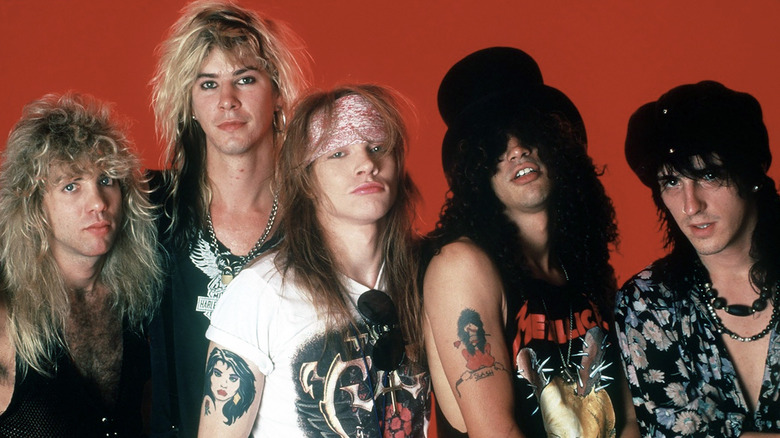
Out Of Every Guns N' Roses Album, One Stands Above The Rest

The Untold Truth Of Joe Walsh
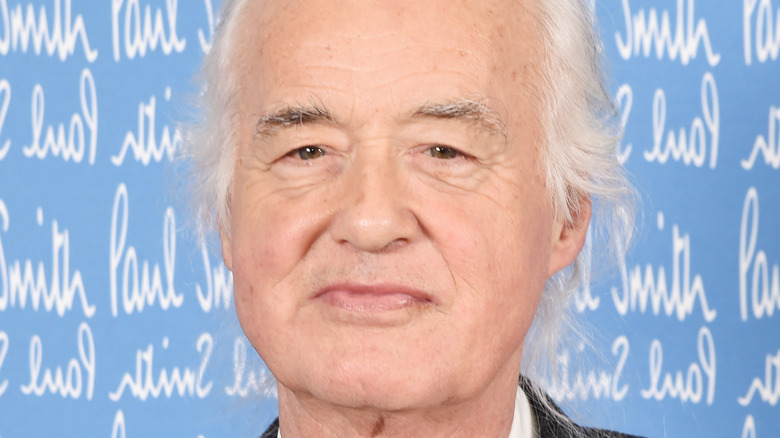
This Is How Much Jimmy Page Is Actually Worth
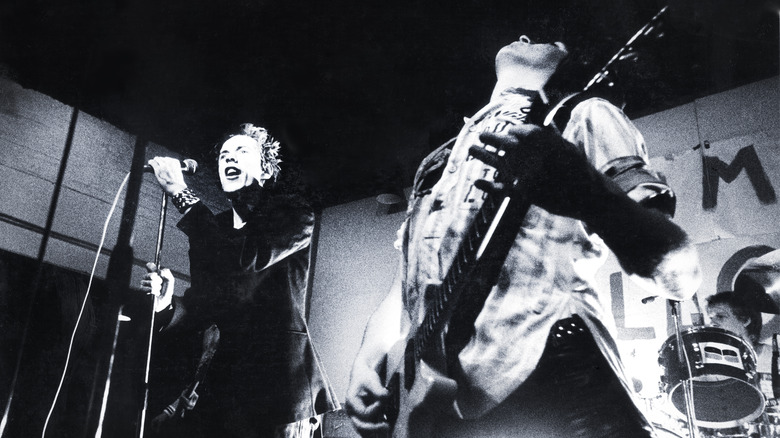
The Sex Pistols Gig That Inspired England's Greatest Bands
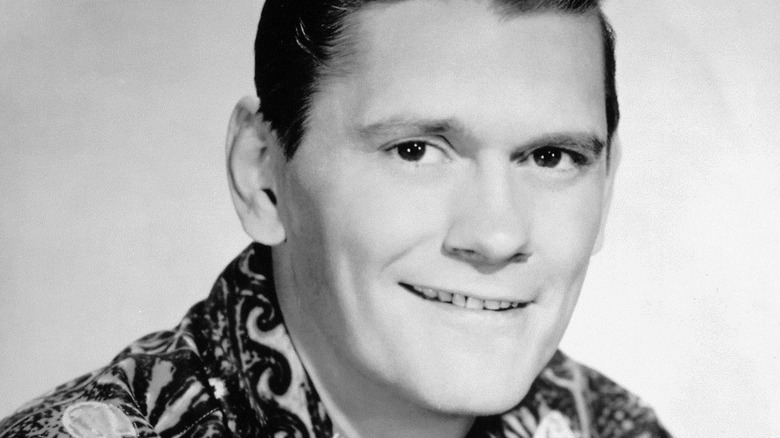
The Tragic Real-Life Story Of Dick York

The Tragic Death Of Bobby Fischer

The Real-Life Story Behind Netflix's Rose Island
